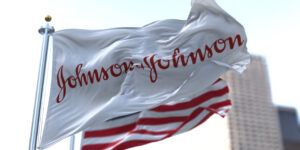Insurer American International Group Inc. reported fourth-quarter results that beat Wall Street expectations, although Chief Executive Robert Benmosche said some employee bonuses will be smaller this year because the company did not meet all of its performance targets.
Overall, the company reported a $4 billion loss on Thursday, due mainly to the sale of aircraft leasing business, ILFC, as well as losses incurred from Superstorm Sandy.
But AIG’s underlying business trends— with stronger operating earnings in its life insurance business, better underwriting margins in its property and casualty business and higher investment income— helped lift operating earnings above what analysts expected.
“It looks pretty good,” Sandler O’Neill analyst Paul Newsome said of AIG’s earnings report.
“Relative to what I was looking for, the life insurance business did better than expected and some of the noncore businesses – like direct investment, and the capital markets operation, which aren’t necessarily the highest-quality earnings – also reported bigger gains than I expected.”
In after-hours trading AIG shares rose 4.2 percent, to $38.84.
Last year marked an important milestone for the insurance group, which was rescued by U.S. taxpayers in 2008 with a bailout that eventually exceeded $180 billion. The U.S. government, which took a stake in the insurer in exchange for the bailout, exited nearly its entire investment in the company in 2012.
The Treasury Department still holds warrants to purchase about 2.7 million shares, but sold the remainder of its common stock last quarter. The Federal Reserve also sold off its holdings in an AIG-bailout related vehicle in 2012.
The bailout exit lifted some uncertainty for investors and AIG replaced Apple Inc in the fourth quarter as the hedge fund industry’s favorite stock.
AIG came under enormous public pressure to slash bonuses while taxpayers were supporting the company. As recently as last month, the watchdog office of the Treasury Department’s bailout program said the agency had approved excessive pay for executives at bailed-out companies—including AIG— even in 2012.
In a memo to employees, Benmosche called the fourth quarter a “historic” one for the company, but also said some bonuses will be smaller this year because of weak performance.
“We still have work to do, and we didn’t meet all our business goals in 2012, which will mean some short-term incentive pools will be smaller this year than last year,” he said in the memo, which was obtained by Reuters.
While the company exceeded outsiders’ expectations, AIG management might have had more aggressive performance targets internally, Newsome said. For instance, low-interest rates have been crimping life-insurance profits industry-wide for some time, leading analysts and investors to expect less from the business.
“Maybe AIG did better than Wall Street expected, but not as good as they wanted,” he said.
AIG’s life-insurance business reported a 20 percent jump in after-tax operating income last quarter. AIG attributed the improvement to its efforts to “actively manage spread income.”
Its direct investment book reported after-tax operating income of $509 million, while the capital-markets operation reported $300 million in after-tax operating income. A year ago those operations reported an after-tax loss of $27 million and after-tax income of $46 million, respectively.
In property and casualty, AIG reported an after-tax operating loss of $945 million, due to the Sandy losses. However, the company cited stronger underwriting margins in the business, which Newsome said was a positive sign.
Overall, AIG posted a net loss of $4 billion, or $2.68 per share, for the period, compared with a year-earlier profit of $21.5 billion, or $11.31 per share.
On an operating basis, the company earned $290 million, or 20 cents per share. The company recorded after-tax losses of $1.3 billion in the quarter from Superstorm Sandy.
Analysts polled by Thomson Reuters I/B/E/S on average expected a loss of 8 cents per share in the quarter.





















 Berkshire Hathaway Announces Leadership Appointments: New CEO at GEICO
Berkshire Hathaway Announces Leadership Appointments: New CEO at GEICO  The Future of Knowledge in Insurance: From Training to AI-Powered Productivity
The Future of Knowledge in Insurance: From Training to AI-Powered Productivity  Bankers Readying U.S. IPOs at ‘Overwhelming’ Pace Ahead of 2026
Bankers Readying U.S. IPOs at ‘Overwhelming’ Pace Ahead of 2026  The Latest Launches from Allstate, WTW, Whisker Labs
The Latest Launches from Allstate, WTW, Whisker Labs 